ECOLOGICALLY BENEFICIAL TURF

A Changing Landscape
PLUS > Highlights from the University of Arkansas
Turfgrass Field Day
THE ARKANSAS TURFGRASS ASSOCIATION MAGAZINE • FALL 2023














THE ARKANSAS TURFGRASS ASSOCIATION MAGAZINE CONTENTS • FALL 2023 8 14 Find this issue, Podcasts, Events and More: THETURFZONE.COM For turf news & updates, follow TWITTER.COM/THETURFZONE COVER STORY RECENT EVENT 8 Ecologically Beneficial Turf – A Changing Landscape 14 University of Arkansas Turfgrass Field Day DEPARTMENTS 5 Index of Advertisers 5 University of Arkansas Turf Team 6 Vice President’s Letter The statements and opinions expressed herein are those of the individual authors and do not necessarily represent the views of the Arkansas Turfgrass Association, its staff, or its board of directors, Arkansas Turfgrass, or its editors. Likewise, the appearance of advertisers, or their identification as Arkansas Turfgrass Association members, does not constitute an endorsement of the products or services featured in this, past or subsequent issues of this quarterly publication. Copyright © 2023 by the Arkansas Turfgrass Association. Arkansas Turfgrass is published quarterly. Subscriptions are complimentary to members of the Arkansas Turfgrass Association. Third-class postage is paid at Jefferson City, MO. Printed in the U.S.A. We are not responsible for unsolicited freelance manuscripts and photographs. Contact the managing editor for contribution information. 4 • ARKANSAS TURFGRASS • Fall 2 023
UNIVERSITY OF




TEAM


continued • COVER STORY Fall 2023 • ARKANSAS TURFGRASS • 5 INDEX OF ADVERTISERS Agra Turf, Inc. ............................... 14 www.agrainc.com Dave’s Sale and Service............... 11 www.turfeagle.com Greene County Fertilizer Co. ...... 13 www.greenecountyfert.com Jackson Sand.................................... 5 www.jacksonsand.com Keeling Company ........... Back Cover www.keelingcompany.com Ladd’s ............................................... 3 www.bobladd.com Modern Turf, Inc. .......................... 13 www.modernturf.com Poinsett Turfgrass Company ...... 10 www.poinsettturfgrass.com Progressive Turf Equipment Inc. ... 7 www.progressiveturfequip.com Smith Seed Services ....................... 5 www.smithseed.com STEC Equipment ...Inside Front Cover www.stecequipment.com The Turf Zone ............................... 11 www.theturfzone.com Winstead Turf .................................. 7 www.winsteadturffarms.com
ARKANSAS TURF
Mike Richardson, Ph.D. Professor 479-575-2860 mricha@uark.edu John Boyd, Ph.D. Visiting Assistant Professor Cooperative Extension Service Little Rock 501-671-2224 Jwb019@uark.edu John H. McCalla Jr. Program Technician III 479-575-5033 jmccall@uark.edu Rhiannon de la Rosa M.S. Student Daniel O’Brien Ph.D. Student
Find your ‘WHY’
Tel: 479-301-5534
Published by: Leading Edge Communications, LLC 206 Bridge Street, Suite 200 Franklin, TN 37064 Tel: 615-790-3718
Josh Landreth ATA Vice President
What motivates you as a turfgrass professional? Are you motivated by helping people? Do you just love grass? Do you find the science of how things grow and develop as interesting as I do? Is it the money (not likely if you chose this as a profession)? Are you motivated by fear? Am I going to lose my job if the greens die? If my customers aren’t happy, would I be able to make it in the corporate world? What motivates you? WHY do you do what you do?
As I get older, I find my motivations changing…sometimes dramatically. I still have big goals for my business, but what truly brings me joy is different today than it was 10 years ago. Once, I was motivated by “success”, “growth”, “numbers”. Let me tell you, there is nothing wrong with that, and if that’s not you, you need to find someone in your organization that is. However, the metrics that typically define success don’t have to be the end-all of what motivates us as turfgrass professionals.
Now, I find fulfillment in simple conversations with friends that have been in the industry as long as I have. I get excited knowing that the vendors we care about are expanding and their employees’ careers are taking off. I love when our technicians or salespeople stop by my office to ask complicated questions about why iron makes the grass green. Quite frankly, I’m motivated to invest in my staff so I can take off and go to the river an “occasional” Friday.
We’re all motivated by different things, but it’s important to identify what those things are. If the numbers bore you, someone else may find their motivation in helping you with that part of your responsibilities. If you’re motivated by helping people, but your entire responsibility is dishing out orders to your golf course staff, it may prove disheartening over time.
As I think of those that serve the ATA, we are genuinely motivated by helping professionals like ourselves. We desire to provide opportunities for you to feel more fulfilled in your profession than you would otherwise. We care about you. We care about our industry. We care about our state. We care, and it’s motivating.
We are so excited about where the industry is going in the state of Arkansas. We should be so proud of the educators we have (Dr. Richardson, Dr. Hutchens, Dr. Wright-Smith) in our state. We should be so proud of the world class golf courses we have in our state. We should be so proud of the sports facilities and the incredible LCO’s that reside right here in Arkansas. We should be proud of the improvements this organization has made over the past few years.
We hope that you will allow the ATA to serve you along the way! It’s what motivates us! We can’t wait to see each of you in Hot Springs in January.
Sincerely,
Josh Landreth
VATA-Vice President
Email: info@leadingedge communications.com
ATA OFFICERS
Richard Covert, President Baptist Health Systems Richard.covert@baptist-health.org
Kyle Sanders, Immediate Past President Sanders Ground Essentials 501-315-9395 kylesanders@sandersground.com
Courtney Landreth Executive Director ataturfgrass@gmail.com
Pat Berger, Director Emeritus University of Arkansas • 479-575-6887 pberger@uark.edu
Charlie Bowen, Director Emeritus Arkansas Hydroseed • 501-315-7333 charliebowen@yahoo.com
Daniel O’Brien, Educational Chair dpo001@uark.edu
Seth Dunlap Arkansas State Plant Board seth.dunlap@agriculture.arkansas.gov 501-225-1598

Daniel Baxley Parks & Recreation Director of Mountain Home dbaxley@cityofmountainhome.com
Brandon Bradley Picture Perfect Lawns brandon@pictureperfectlawns.com
Mark Brown Nabholz • 501-749-7459 rmbrown2@ualr.edu
Rodney Fisher Agra Turf, Inc. • 501-268-7036 agrarod@yahoo.com
Josh Landreth, Vice President Ace of Blades • 479-530-7001 aceofblades@cox.net
Guy Oyler Jerry Pate Turf & Irrigation goyler@jerrypate.com • 501-317-5980
Rodger Pevehouse Life Member
Jay Randolph Sebastian County Park Admin. & Golf Course Superintendent jrandolph@co.sebastian.ar.us
Ricky Self Cypress Creek r.self@yahoo.com • 501-605-8000
VICE PRESIDENT’S LETTER
6 • ARKANSAS TURFGRASS • Fall 2 023 Arkansas Turfgrass Association P.O. Box 1862 • Lowell, AR 72745
2024 ATA ANNUAL CONFERENCE and TRADE SHOW JANUARY 25 – 26, 2024 Hot Springs Convention Center | Hot Springs, AR To reserve a booth at the ATA Tradeshow CONTACT Courtney Landreth ataturfgrass@gmail.com (479) 301-5534
Better Built. Quality Results. Period.
Sports field, Park and Estate Mowers

Contour / Rough Finishing Mowers
Contour/rough finishing mower: Pro-Flex™ 120B 10’ cut TDR-X™ roller mower 10.5’ cut
Turf Grass Production Mowers
Tri-Deck cutting widths: 12’, 15.5’, 22’*, 36’*
Progressive Turf builds the right mowers and rollers for any field. For over 30 years they have set and re-set the standards in commercial grade mowing equipment.
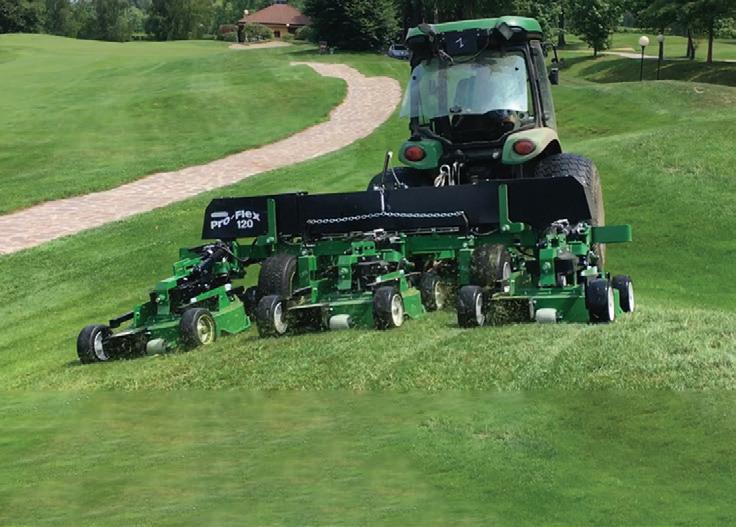


Contact your Progressive Dealer to find out why Progressive products are outstanding in any field!
1. What is Matrix?
• Reinforced product grown at bottom of sand based profile
• Sprigged field to insure highest percolation rates


• Ready to Play product
2. Where is it used?
• High demand athletic fields: football, soccer, baseball, softball, and rugby.
• High traffic areas: Horsetracks, goalmouths, and tournament crosswalks.

Fall 2023 • ARKANSAS TURFGRASS • 7 Winstead Turf Matrix is a 100% USGA sand based , ready to play sports turf replacement system that enables instant use straight after install, perfectly suited for high demand stadium / elite field applications Winstead Turf Farms, Inc. 22860 Highway 196 Arlington, TN 38002 901-268-8803 winsteadturffarms.com @winsteadmatrix
MATRIX AVAILABLE WWW.PROGRESSIVETURFEQUIP.COM
WINSTEAD TURF
800.668.8873
built in North America and supported by a world-wide
network.
Quality
Dealer
90”, 10.5’, 12’, 15.5’,
Roller Mower cutting widths: 65”,
22’*, 29.5’*
* available with bolt-on galvanized deck shells
Ecologically Beneficial Turf
A CHANGING LANDSCAPE
By
Govements such as “Save the Bees”, “No Mow May”, and “Let it Bloom June” are recently trending critiques of monoculture lawns. They highlight the lack of plant and insect diversity in single grass species or cultivar lawns. In recent years, programs like Operation Pollinator have moved the golf industries toward stakeholder interests by supporting research and outreach efforts to improve the ecological function of turf on their facilities. Similarly, the turfgrass industry must prepare to do the same for lawns. While replacing grass lawns with flower gardens, white clover fields, or meadows may be beneficial for pollinators and people in some areas, it ignores the documented want and need for lawns in modern society.
Monoculture lawns, typically a green frame around residential and commercial buildings, accumulate pests and consume
a significant sum of inputs. Monoculture lawn alternatives, such as diversified, pollinator friendly, or flower lawns have been discussed; however, a warm-season alternative lawn with known beneficial impact and best management practices (BMPs) has not solidified in science or common practice. Understanding BMPs, and the benefits of these lawns, are crucial goals for the future of the turfgrass industry. The United States Department of Agriculture-National Institute of Food and Agriculture (USDA-NIFA) has funded the Refuge Lawn project to help highlight these goals.
The Refuge Lawn project consists of interdisciplinary researchers from Mississippi State University (MSU), Auburn University (AU), and the University of Georgia (UGA). The team set out to identify low-growing, flowering plants that would be

COVER STORY 8 • ARKANSAS TURFGRASS • Fall 2 023
Casey O’Neal, Graduate Research Assistant, Auburn University
Julie Wang, Graduate Research Assistant, University of Georgia
Nikolay Minaev, Graduate Research Assistant, Mississippi State University
This article was originally printed in Alabama TurfTimes , Summer 2023 and is reprinted with permission.
A grass lawn with spring beauty at a park in Starkville, MS.
Photo provided by Nikolay Minaev.
easily established and managed in grass lawns, as well as provide the resources necessary to promote an abundant and diverse pollinator community. As some of the graduate students work on different aspects of the project, we would like to share some of our on-going research.
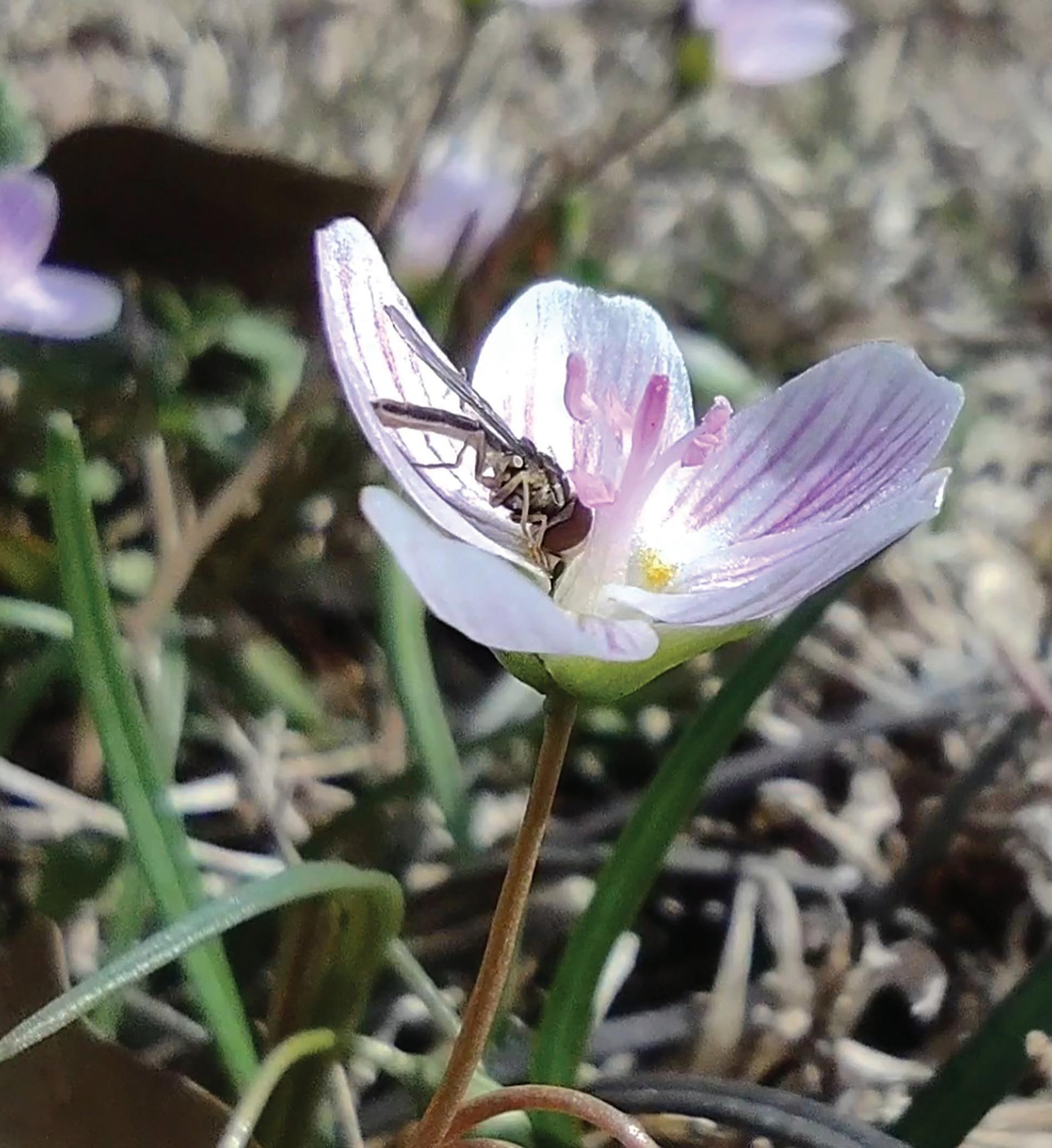

PICKING THE RIGHT PLANTS
At Mississippi State University, Nikolay Minaev, working with Dr. Jay McCurdy, has been looking for flowering plants that could be easily established and propagated within turfgrasses commonly found in southeastern lawns. After evaluating various species based on their blooming properties and
appearances in lawns, it was determined that spring beauty ( Claytonia virginica ) shows high potential for inclusion in warm-season lawns. Spring beauty is a perennial wildflower that is native to rich forests and low woodlands. It prefers moist, well-drained soil and light shade to part sun. It grows from a small corm or seeds. The growing season lasts from January through April in the temperate climate of the southeast, after which the plant senesces and lies dormant before emerging from corms the next year. The flowers are showy, pinkish white with deep pink veins, and open in clusters at the apex of the plant, adding a burst of color to the lawn during the early spring period. Additionally, it is a resource for pollinators such as the rare spring beauty bee, a small mining bee native to eastern North America.
Fall 2023 • ARKANSAS TURFGRASS • 9
A hoverfly drinking nectar from a spring beauty flower at Town Creek Cemetery, Auburn, AL.
Photo by Casey O’Neal.
The current understanding of spring beauty propagation is limited, hence we aim to address this knowledge gap by conducting a comprehensive study. The primary objective is to phenotype different populations of spring beauty and identify those with the most abundant and long-lasting bloom period, accompanied by high seed production and germination rates. This will allow for the selection of the most promising population for inclusion in lawns. In addition to identifying the optimal population, we are also exploring the most convenient method of propagation, with a particular focus on seeding. To achieve this, we are conducting experiments to find the optimal conditions for spring beauty germination, including testing various temperatures and probable treatments for quicker establishment.
Another project investigates the tolerance of spring beauty to commonly used pre-emergence herbicides in lawns. Our objective is to develop management practices that are safe for both turfgrass and spring beauty. By combining these different aspects of our research, we hope to provide a comprehensive understanding of spring beauty propagation and its integration into turfgrass lawns, while also promoting safe and sustainable management practices.




CARING FOR A REFUGE LAWN
Julie Wang and Dr. Gerald Henry at the University of Georgia are investigating the BMPs for cultural management of a refuge lawn. Mowing height is one of the most well documented cultural factors affecting weed populations in turfgrass. Nearly all lawns are regularly mown for functionality and aesthetics. While mowing is relatively well understood in terms of eliminating weeds, it can be similarly applied to encourage flower production and growth of refuge lawn. As part of the Refuge Lawn project, we are studying the effect of mowing height on flowering plants commonly found in turfgrass that have potential to be pollinator resources. We are currently measuring the survival, growth, and reproduction of white clover (Trifolium repens), Virginia buttonweed (Diodia virginiana), and common lespedeza (Kummerowia striata) in response to different mowing heights. The results may explain the persistence of flowering plants in turfgrass as well as their potential as floral resources for pollinators.

COVER STORY • continued 10 • ARKANSAS TURFGRASS • Fall 2 023
, Arkansas Poinsett Turfgrass Company is a family owned and operated business for over 20 years. We take great pride in the quality sod and services we provide to our customers. We strive to abide by all ethical standards and take pride in assuring that our customers receive a fresh product each and every day. Call the office today to schedule your pick-up or delivery order. Need a quote? Have questions? 870-578-2391 www.poinsettturfgrass.com Lets Discuss Turfgrass Advertising Opportunities 888-707-7141 sales@leadingedgecommunications.com Contact LEADING EDGE COMMUNICATIONS
Harrisburg
Fertilization, another common cultural practice in lawns, affects species competition and plant diversity. A high nitrogen (N) content increases turfgrass productivity and competitiveness with flowering plants adapted to limited N availability. This is especially relevant as fertility practices vary by turfgrass species. For instance, centipedegrass (Eremochloa ophiuroides) is adapted to lower maintenance regimes in contrast with hybrid bermudagrass (Cynodon dactylon x C. transvaalensis) that requires regular fertilization during peak growth. We are evaluating the competition between common flowering plants and turfgrasses under different fertility treatments, focusing on white clover, Virginia buttonweed, centipedegrass and hybrid bermudagrass. Preliminary results suggest that low fertility inputs hinder hybrid bermudagrass growth, leading to an open canopy, which encourages flowering plant growth. On the other hand, exorbitant amounts of fertility on centipedegrass only enhances flowering plant competition and further plant growth. The understanding of flowering plant and turfgrass dynamics will help create BMPs for both homeowners and the turfgrass industry.
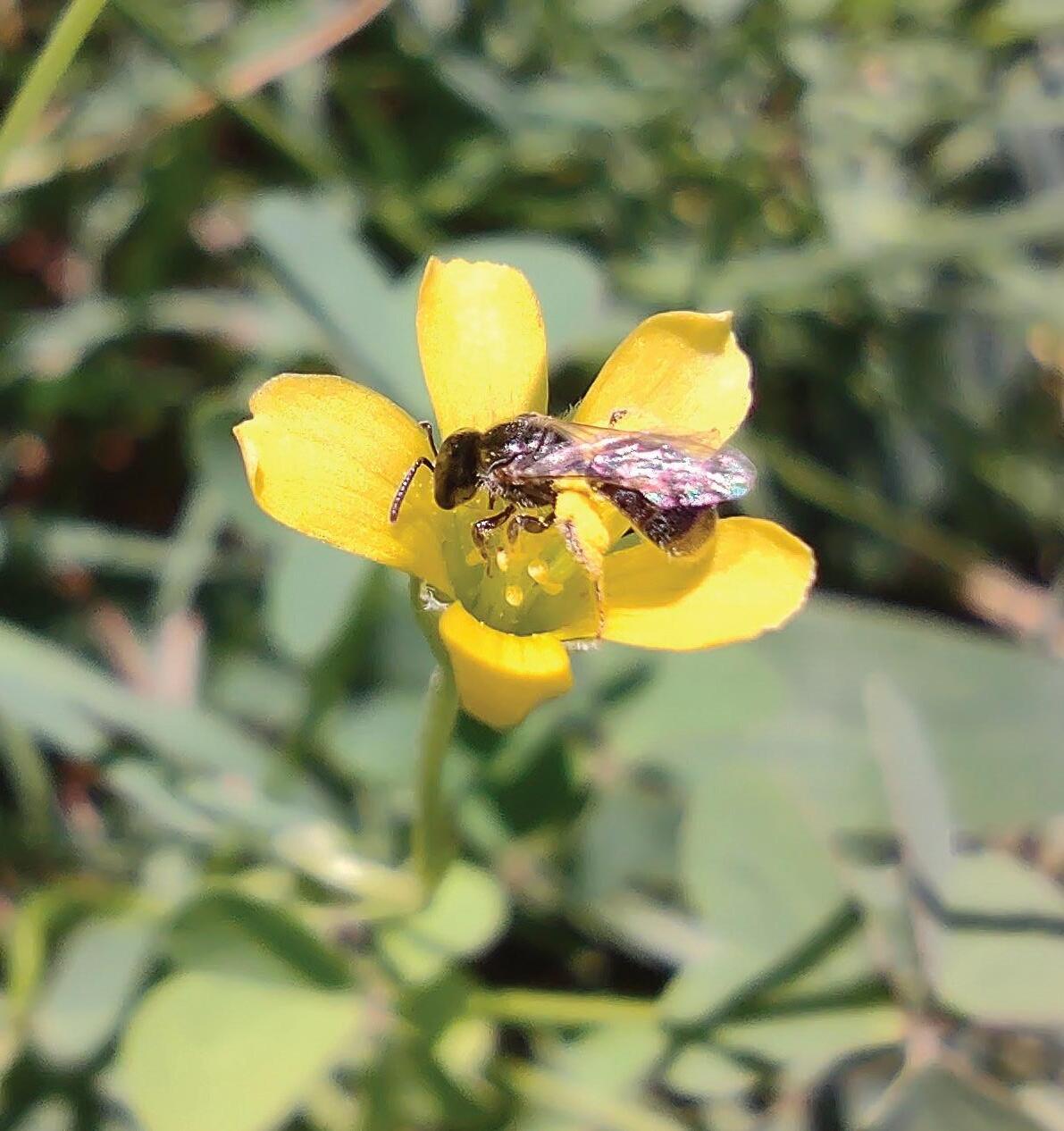

Fall 2023 • ARKANSAS TURFGRASS • 11
sales@leadingedgecommunications.com 888–707-7141 Over 10,000+ Impressions for Top News Post for June 2023 https://twitter.com/TheTurfZone/status/1667634993198424064 Over 8,000+ Impressions for Top Sponsored Post for June 2023 https://twitter.com/TheTurfZone/status/1665765350829424643 1.82 Million Impressions in 2023 and Growing! twitter.com/theturfzone Contact us today to learn about effective and unique TurfZone marketing strategies that target turf industry professionals. Get John Bean pumps, Durand Wayland & Rears Mfg. sprayers, Hannay reels and more to do any job. ORDER TODAY FROM DAVE ' S SALES & SERVICE 2401 W Matthews Ave, Jonesboro, AR 72401 1-800-635-3158 TURFEAGLE .COM
A sweat bee collecting pollen from yellow wood sorrel (Oxalis stricta) at the AU Turf Unit.
Photo by Casey O’Neal.
WHAT DO THE BUGS THINK?
At Auburn University, Casey O’Neal and Dr. David Held want to know what insects benefit from integrating flowering plants into warm-season grasses. Beginning in fall 2021, we established plots of seven potential flowering plant species in lawns at the AU Turf Unit, Town Creek Cemetery, and Kiesel Park in Auburn. These sites consist of established turfgrass lawns that host a range of common warm-season turfgrasses including bermudagrass and centipedegrass. The flowering species include spring beauty, white clover, and Virginia buttonweed, allowing us to connect our research with the teams at MSU and UGA. In 2022, the flowering sites were monitored for visitation by insect pollinators, and the insects were collected and identified. Due to the drought in 2022, data collection at these sites will continue in 2023. From these collections, we can establish a pollinator network. This network will show which flowering plants provide resources for the largest number of pollinators, and which plants provide resources for rare or threatened pollinators. While the exact number is unknown, it is expected that there are more species of bees in Alabama than any other southeastern state, and currently over 500 species have been identified in Georgia alone. With such a high diversity of insect pollinators, it is important to include flowering plants that serve as many of the native pollinators in the southeastern US as possible.
By combining the knowledge gained from our respective studies, we can establish a model refuge lawn with known BMPs and beneficial impacts on pollinators. To keep up with us and the rest of Refuge Lawn project’s work, or to contact any of the researchers involved, please visit our website at:
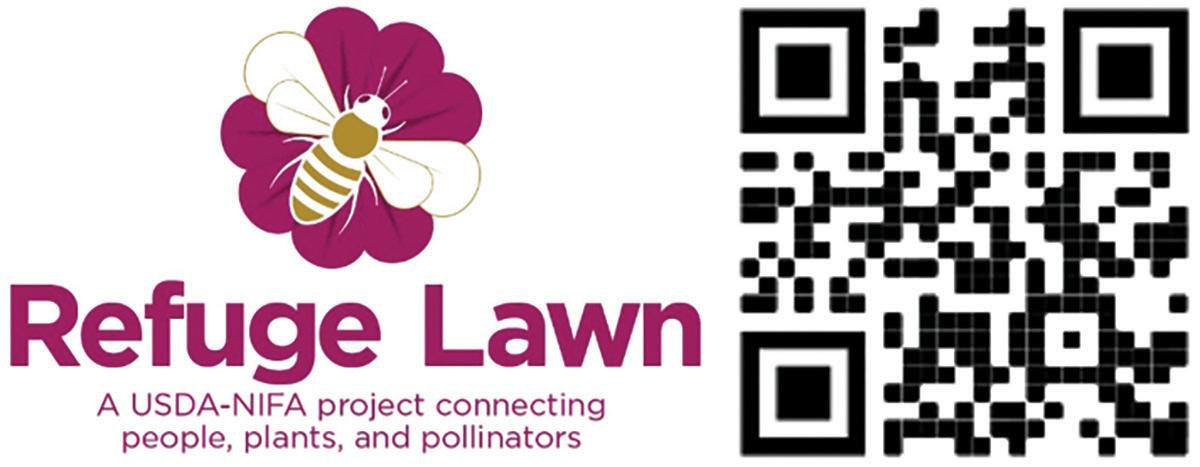

www. REFUGELAWN .com

12 • ARKANSAS TURFGRASS • Fall 2 023
COVER STORY • continued
Virginia buttonweed in a lawn on AU campus.
Photo by Casey O’Neal.
A pure green sweat bee (Augochlora pura) visiting white clover at Kiesel Park, Auburn, AL.
Photo by Casey O’Neal.
This work is supported by Agricultural and Food Research Initiative grant no. 2021-67013-34145 from the USDA National Institute of Food and Agriculture.

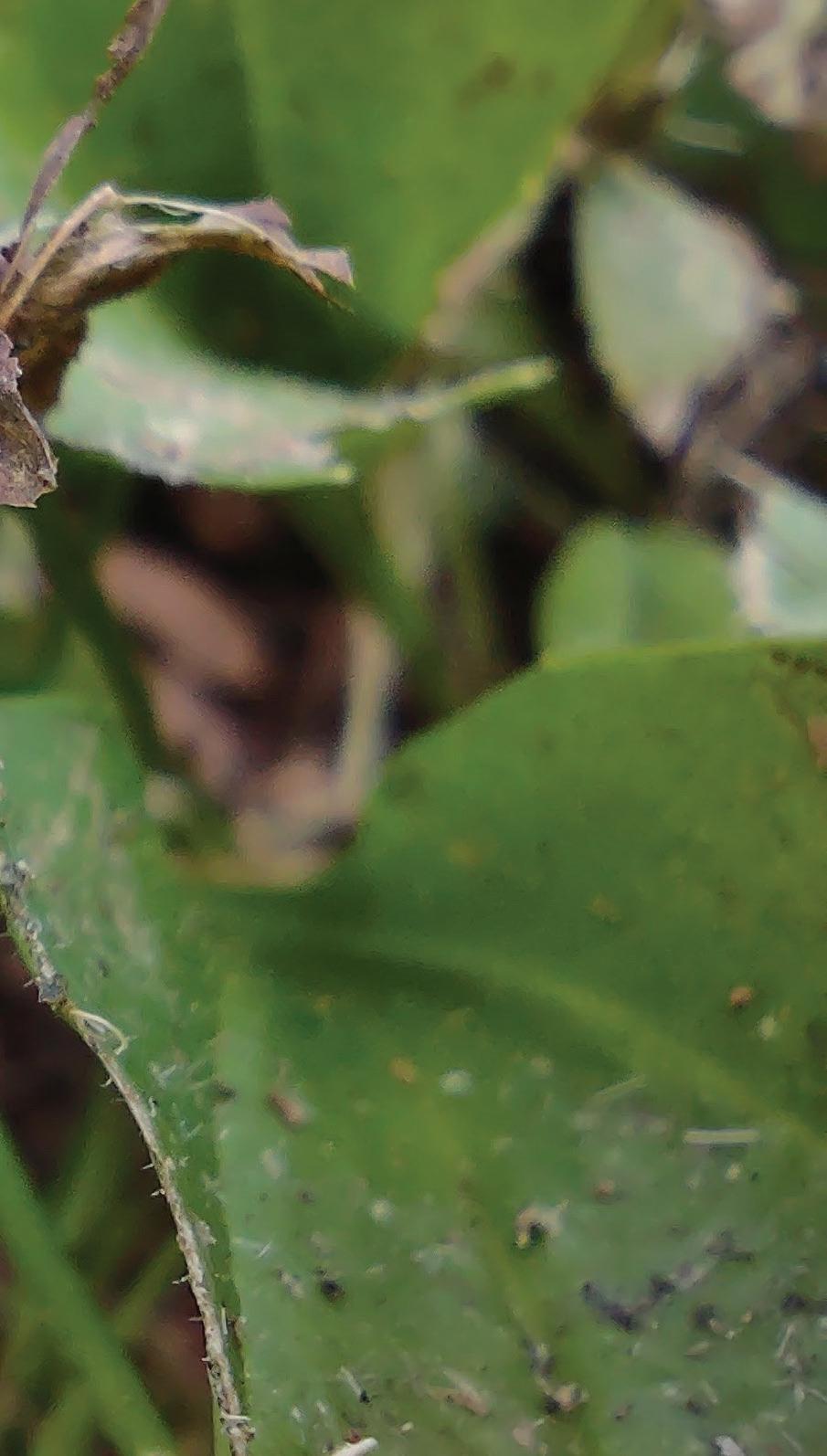








MFR/HQ: Greensboro, GA GET READY. GROW YOUR BUSINESS, WE’LL GROW YOUR TURF. Aeration and overseeding time is coming fast. Get the best results with GreenePOP™ 16-21-2 and N-Ext RGS™. With your work and our fert, lawn renovation season will be better than ever. BUY/SHIP DIRECT Learn more: GreeneCountyFert.com
University of Arkansas
FIELD

Tuesday, August 1, the University of Arkansas

Turfgrass team held an engaging and informative Field Day at the Agriculture Research and Extension Center Horticulture Field Lab in Fayetteville.

RECENT EVENT 14 • ARKANSAS TURFGRASS • Fall 2 023
PO Box 9168 Searcy, AR 72145 www.agrainc.com Cell: 501 230-7303 Business: 501 268-7036 Ext: 107 Fax: 501 268-0606 Email: agrarod@yahoo.com Specialty Distribution Rodney Fisher On Thanks to our major sponsors that make this event possible!! For Advertising Opportunities CONTACT LEADING EDGE COMMUNICATIONS 888-707-7141 sales@leadingedgecommunications.com TURFGRASS
This event gave attendees opportunities to not only hear updates on the latest research findings, but also to earn CEU and pesticide recertification credits. Turfgrass managers and their industry peers also had a chance to meet Dr. Wendell Hutchens and Dr. Hannah Wright-Smith, two new faculty at the University. Hat Sponsor Breakfast Sponsor Water Bottle Sponsor Kona Ice Sponsor Lunch Sponsor
DAY
Application Strategies for Optimizing Wetting Agent Performance on Sand-Based Putting Greens
Daniel O’Brien
Dollar Spot Fungicide Trials on a Creeping Bentgrass Putting Green
Dr. Wendell Hutchens
DMI Safety Study
Mike Battaglia and Jessy Anders
GS3: What Is the USGA’s New Technology Tool All About?
Paul Jacobs
Progression of Field Metrics: a Case Study
John Reilly
Applicator Issues / Sprayer Technology
Jason Davis
SPEAKERS and TOPICS INCLUDED
Developing Management Tools for New Greens-Type Zoysiagrasses
Mike Richardson and Hannah Smith
Scotts ProVista Kentucky Bluegrass – The future of turfgrass genetics?
Mike Richardson and John McCalla
Safety of Recognition and Fusilade II during establishment of a seeded zoysiagrass
Mike Richardson and Hannah Smith
Brown Patch Fungicide Trials on Tall Fescue Lawns
Wendell Hutchens
Control of Difficult Broadleaf Weeds
Hannah Wright-Smith
Technology in Commercial Turfgrass Management: Rethinking What It Means & How to Use It
Daniel O’Brien
TO REVIEW THESE TOPICS, VISIT
Assessing Tallgrass Prairie Species for Roadside Vegetation in Arkansas
Sarah Paschal
Incorporating Natives into Landscapes Sarah Paschal
2019 NTEP Bermudagrass Trial
Mike Richardson, John McCalla, and Sarah Paschal
The value of continuing education, networking and fellowship has never been more important, and it was phenomenal to see so many professionals make this event a priority. The team at University of Arkansas is top-notch, and ATA is proud to support its members and research efforts.
https://horticulture.uark.edu/research-extension/turf/turf-education/2023-field-day-book-FINAL.pdf

Fall 2023 • ARKANSAS TURFGRASS • 15
























































